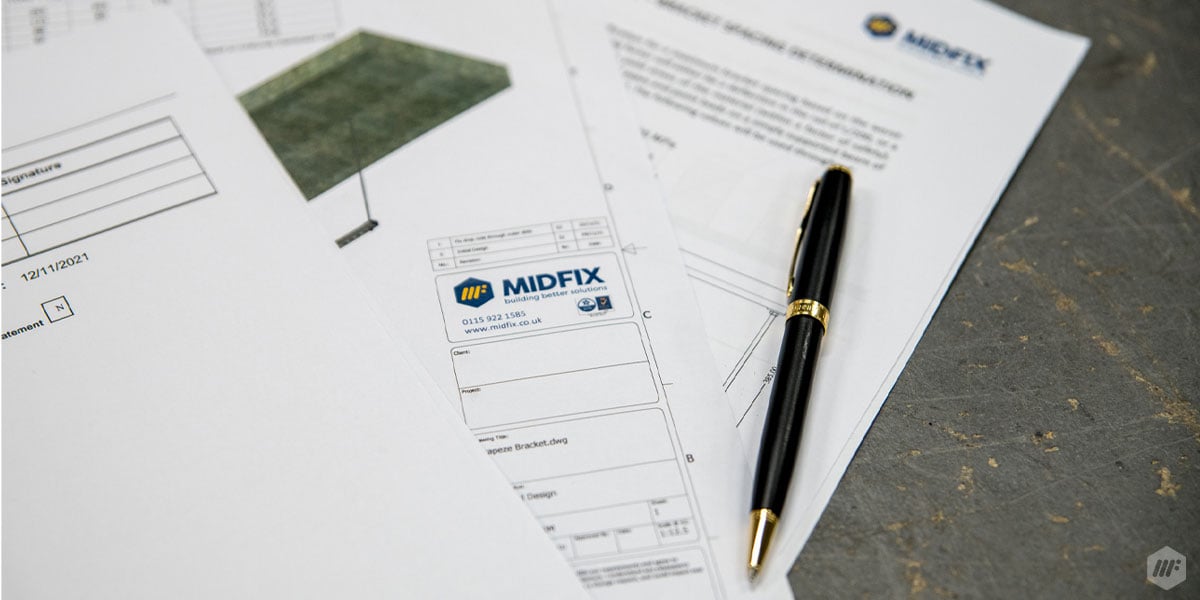Channel section vs. Secondary modular box section vs. traditional steel profile: which profile is right for your application?
As an M&E contractor, it can be difficult to know whether channel section, secondary modular box section, or traditional steel profiles should be sourced. As the sector grows, tightening up a specification and providing the necessary evidence that support profiles are fit for purpose is critical, and in order to achieve this goal, you will first need to understand the differences.
This was clearly pointed out in a recent conversation with an M&E contractor:
“I have often turned to channel sections to support cable and pipe runs, but with secondary modular box sections emerging over the last decade, and the choice of traditional steel profiles, the lines are blurred and it is difficult to select the correct profile.
It was a lot simpler when there were just two options; channel section or traditional steel profiles, but now costs are scrutinised, and there are sustainability quotes to hit, it can be confusing to know which profiles to select for which application.
What I have been searching for is an article with a clear explanation of the differences and application uses but then backs off and lets me decide”.
This article intends to answer that question by objectively presenting the facts that will let you make an informed decision. After reading this article you will have an overview of the following information:
What are channel sections?
What channel finishes are available?
What are secondary modular box sections?
Why is there confusion between channel and secondary modular box section?
Why would you use secondary modular box section?
Why wouldn’t you specify secondary modular box sections?
Why do some contractors not accept tender submissions with modular steelwork?
What are traditional steel profiles?
Why would you use traditional steel profiles?
Why wouldn’t you use traditional steel profiles?
A comparison table between different profile supports
Are there any external influential factors to consider?
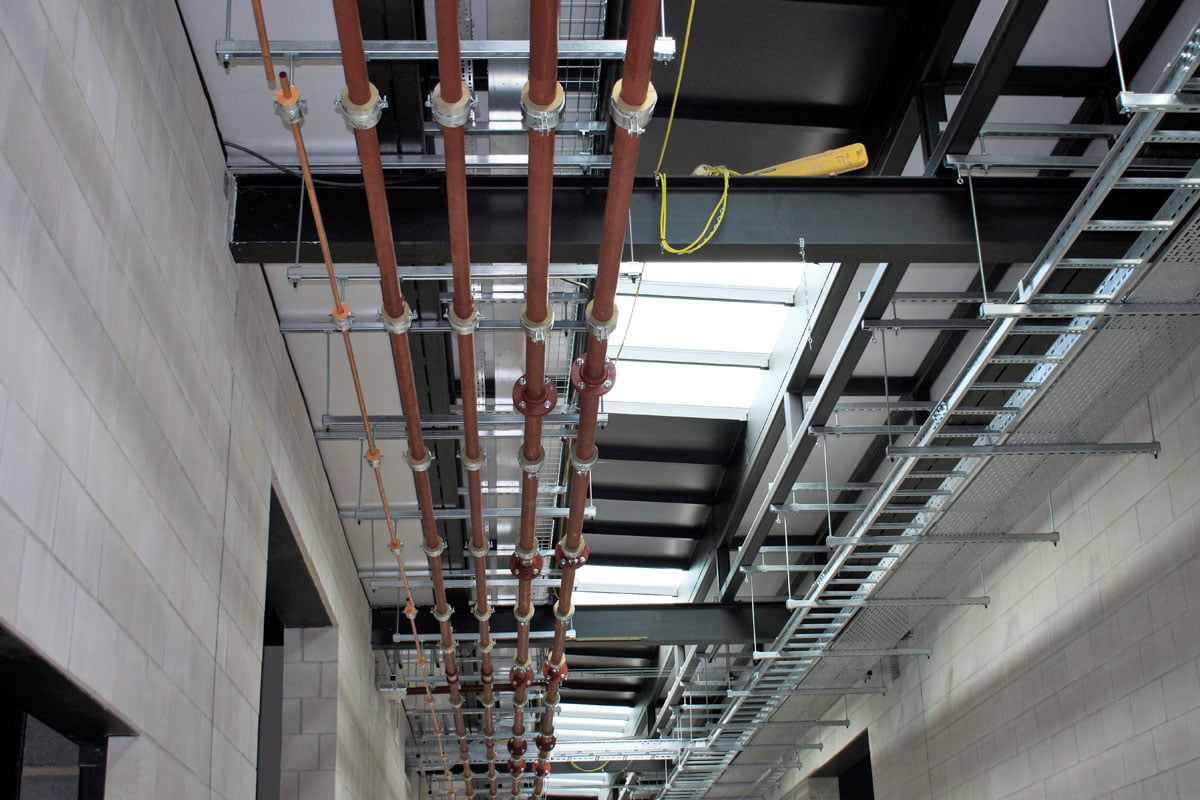
What are channel sections?
Commonly known by the original brand name of Unistrut, channel section has become the construction industry norm for building services supports.
Channel sections are manufactured using rolled steel 41mm wide. In several finishes (single, back to back, slotted or plain).
Channel section is typically ordered in 3m or 6m lengths in either 1.5mm (light) or 2.5mm (heavy) and 3mm steel for different load bearing capabilities.
Coupled with threaded rod and associated fixings, channel sections can be prefabricated into support frames. For example, as single or multi-tiered trapeze brackets suspended off steel purlins or straight from the concrete substrate via thread cutting anchors. These ‘trapeze' or 'corridor brackets’ support single or double pipe or cable runs across corridors.
Channel section is the industry standard for supporting lightweight to medium M&E services.
BS:6946
Typically, channel sections are manufactured to BS 6946. BS 6946 is applicable to all channel that is made from 1.5mm or 2.5mm steel. You can tell by glancing at the channel if it has passed the British Standard as it will be edged onto the length of channel.
Comprehensive safe working loads are calculated in accordance with BS EN 1993-1-3: 2006 (Eurocode 3) “Design of Steel Structures” and published in the channel load tables.
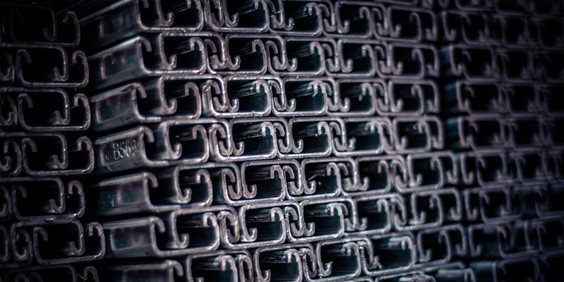
What channel finishes are available?
Channel can be pre-galvanized (standard finish for channel), hot-dip galvanized and powder coated for hazardous environments. For the best protection against corrosion, it is recommended that stainless steel is specified.
An overview of the typical ‘finishes’:
- Pre-Galvanised Finish: pre-galvanised to BS EN 10346 – standard finish for channels. S280 Z275g/m2 steel
- Hot Dip Galvanised: Hot Dip Galvanised to BS EN 1461, galvanised after manufacture for superior corrosion protection, S280 Steel.
- Powder Coated: Polyester powder coating on pre-galvanised channel for internal or external use, 40 micron coating
- GRP: Non-corrosive and non-conductive, high strength and impact resistance combined with light weight
There can be confusion around the different finishing options available. Often an incorrect profile is selected without the right information to hand. To keep informed on the process of galvanizing listen to this podcast: Joseph Ash Galvanizers.
Where would you use channel section?
To support lightweight pipe and cable runs, a single trapeze profile is fitted, and to support heavier mechanical services back-to-back channel profiles are chosen.
In certain circumstances channel brackets have been seen to support electrical containment flush against steels.
Finally, due to its lightweight nature, channel frames are often made to support rooftop support frames such as AHU's.
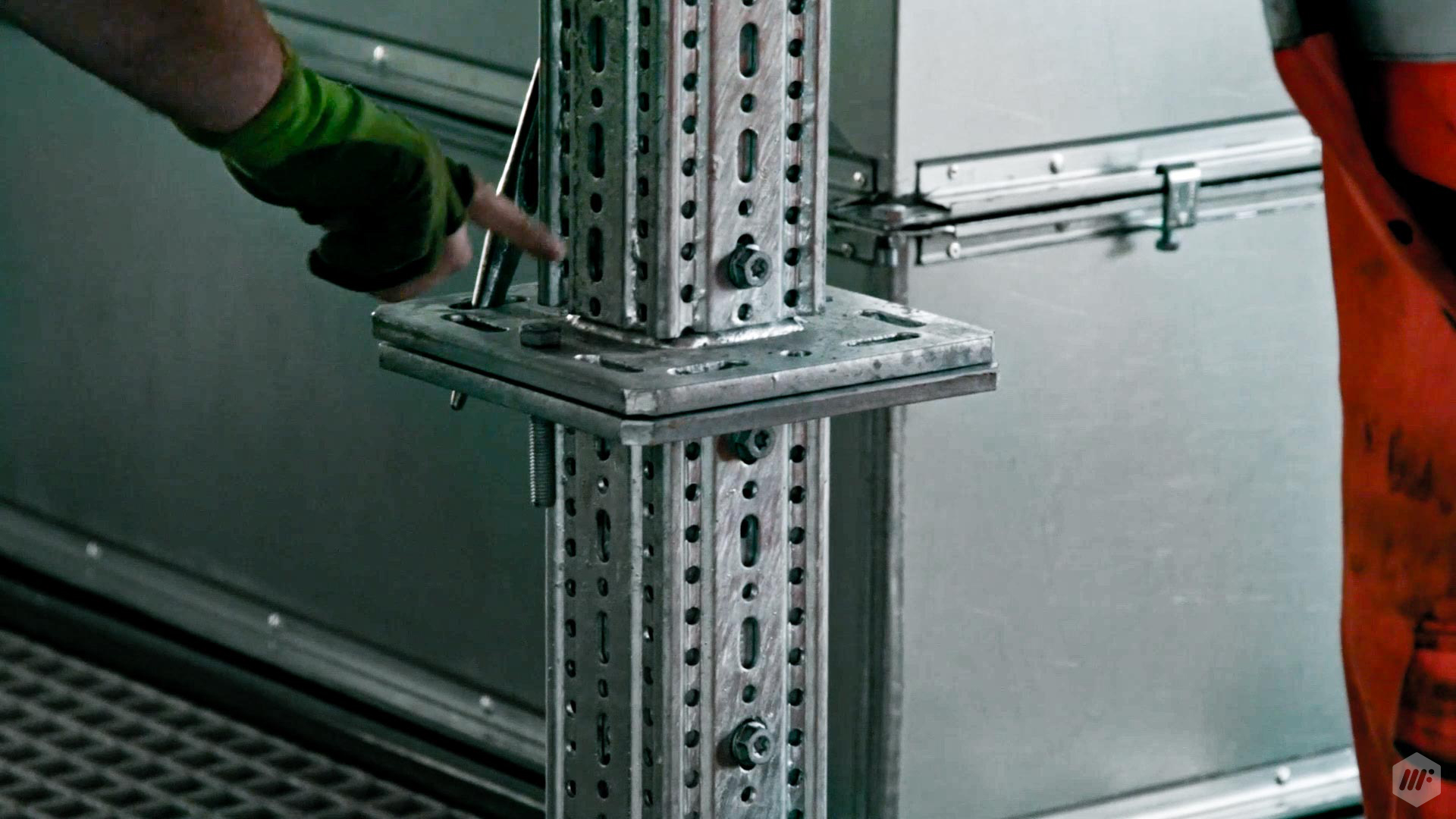
What is secondary modular box section?
Secondary modular box section is a non-welded profile that can be connected to form a proprietary secondary modular system.
As a proprietary secondary modular system, it can be used to support load-bearing secondary M&E services.
Secondary modular steelwork is also sourced to support loads that are beyond the capabilities of strut type channels, and would traditionally replace off-site fabricated steelwork.
Finally, secondary modular steelwork systems can also be used as a substitute for heavy steel sections such as box sections, I-beams and PFC’s.
Why is there confusion between channel sections and secondary modular box sections?
Channel section has been trusted for over a century. It is the go-to product to support M&E services. Many M&E contractors compare both secondary modular box sections & channel sections but an important difference is that they both support different applications.
The description below is intended to make the distinction clear between both:
Where the load-bearing structure exceeds the loads a strut-based frame can handle then secondary modular steelwork or traditional steelwork is specified.
Why would you use secondary modular box section?
You may be an installer or a project manager and may question; how can secondary modular box section support help you in the next M&E installation? To best answer this question, the following information examines why you might turn to a secondary modular box section.
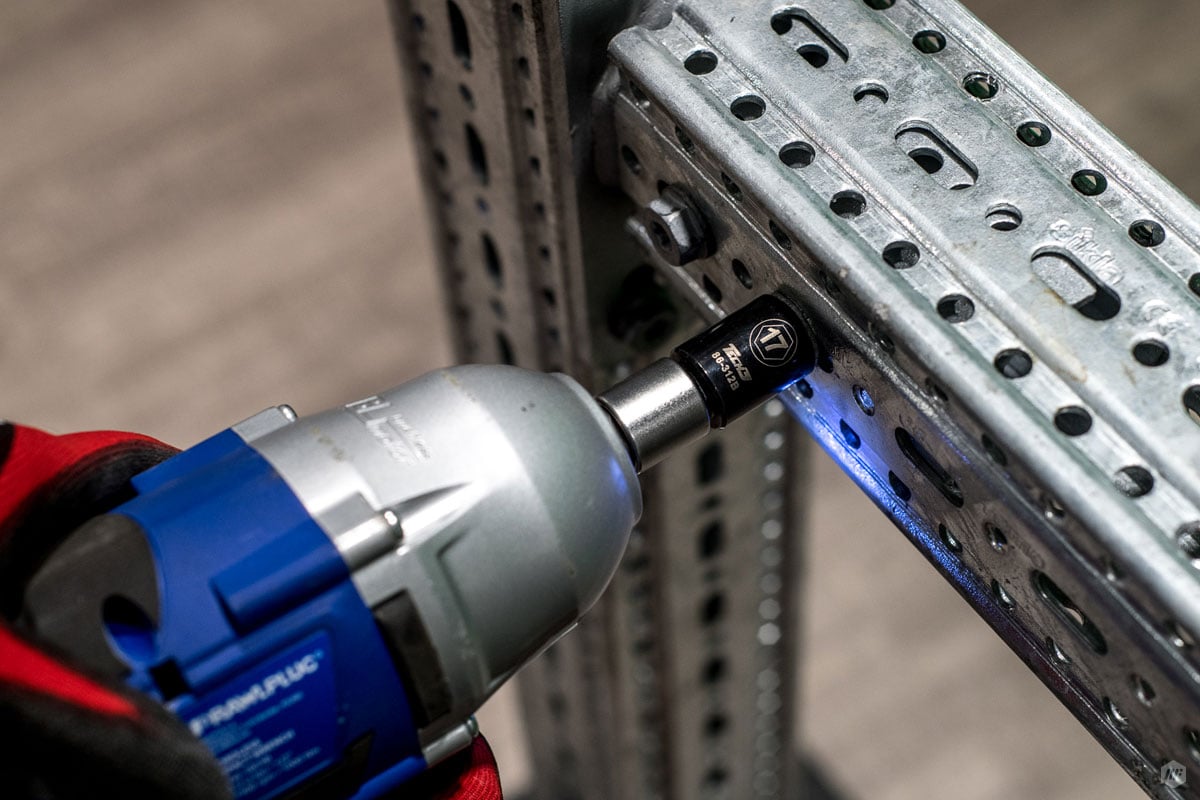
Installers
As an installer, you want to carry out your installation as professionally and quickly as possible which is one of the benefits of secondary modular box section. Secondary modular box section can be easily assembled with just an impact driver and FLS screws, nothing else, meaning goal posts and H-frames can be assembled swiftly. If adjustments are required, then they can be made without hot-works.
Project Manager
An important role for a project manager is to ensure that all installations are as per the technical specification and that it is completed on time. In recent times sustainable practices and increasing safety have also been key to a successful project.
All of these aspects can be helped by using secondary modular box sections or connected together to make a proprietary secondary modular system. First of all, box sections can be easily assembled and altered without the need for hot works, both of which help to complete an installation quicker without reliance on heavy carbon emissions.
Lastly, secondary modular box sections can be sent as separate components to be made up on-site, leaving lighter and less frequent deliveries.
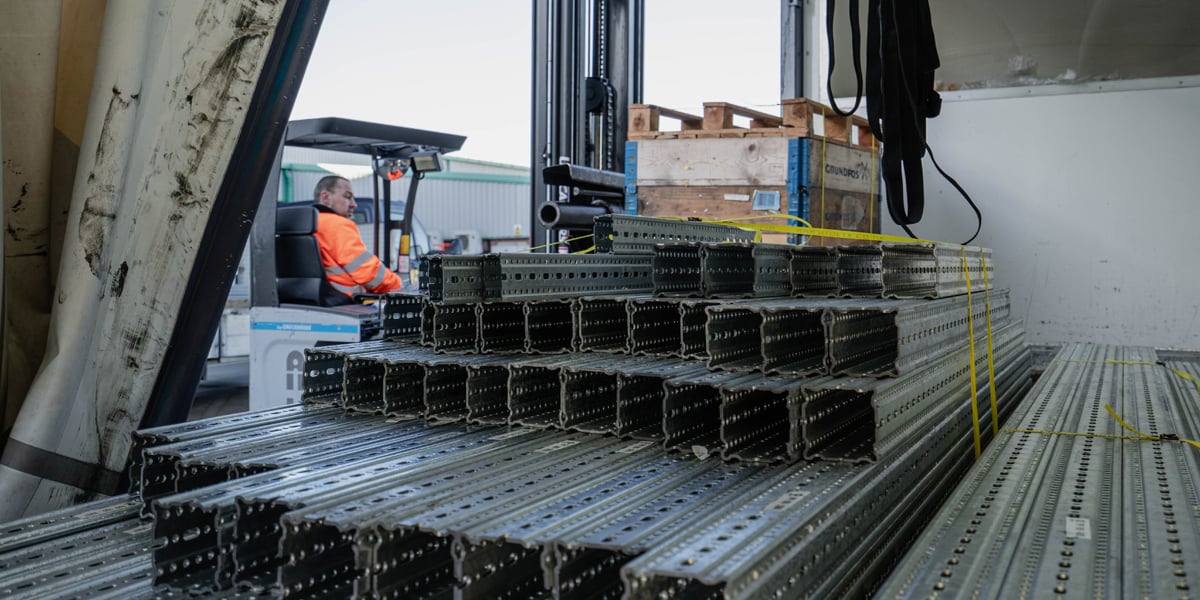
Embedded carbon footprint
Defined as "the carbon footprint of a building or infrastructure project before it becomes operational". Embedded carbon is responsible for a large percentage of all carbon emissions from an M&E installation.
When using secondary modular box section or as a proprietary secondary modular system embedded carbon is reduced. Firstly because the frame can be altered without the need to weld, secondly, material waste is reduced and finally it can be swiftly assembled reducing head count.
Space
For busy sites such as schools and hospitals, it is often the case that there is not enough room for hotworks or the space to manoeuvre heavy supports. A secondary modular box section can be installed in component form on-site.
Why wouldn’t you use secondary modular box section?
Modular secondary steelwork supports may not be required if you are only supporting lightweight M&E services such as pipe and cable runs. In those cases, channel section would be sourced.
Why do some contractors not accept tender submissions with secondary modular steelwork?
There are still some cases where M&E contractors are told not to include modular steelwork when submitting a tender for a project. This could be because they believe that cost will be the primary factor for winning the tender, it could be because installers on-site are familiar with ‘C-section’, or that they believe that channel section is suited for all supports.
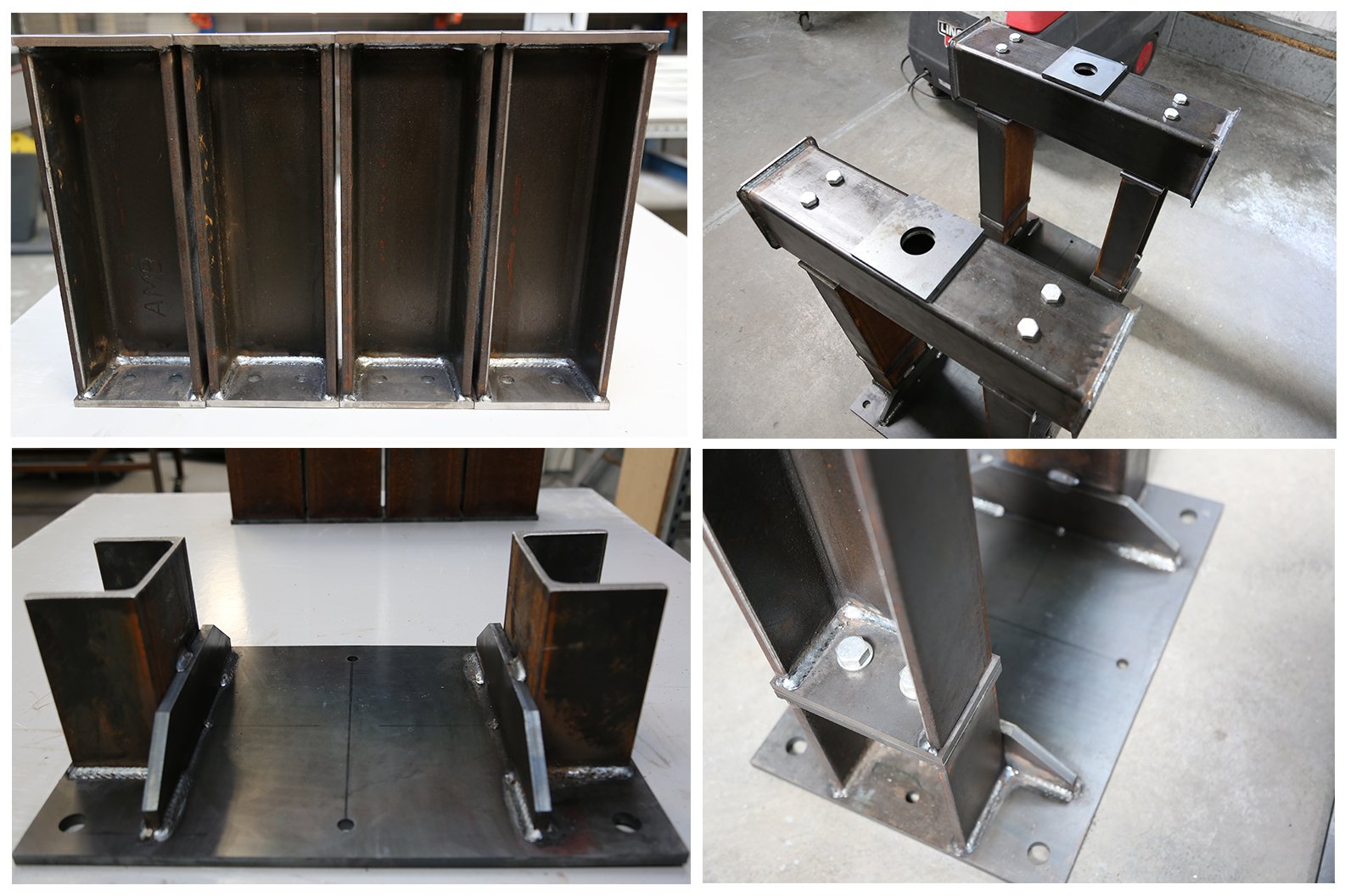
Traditional steel profiles
Traditional profiles such as PFC and I-beams are usually welded together to provide support to heavy duty building services.
Why would you use traditional steel profiles?
There is a lot that can be done with welded steelwork such as I-beams, PFC and box sections because it can suit certain loads where only a few supports are required.
Why wouldn’t you use traditional steel profiles?
As the industry is moving towards a sustainable future with net-zero carbon, some M&E contractors are moving away from traditional steel profiles to support M&E services.
This is because these profiles tend to induce the greatest amount of carbon, both through wasted material from cutting and drilling and alterations from welding.
Secondly, traditional steel profiles tend to have a greater cost when compared to other profiles, particularly when supporting a series of pipework, because of the overall costs of material, labour, and installation.
Comparison table between the different profiles
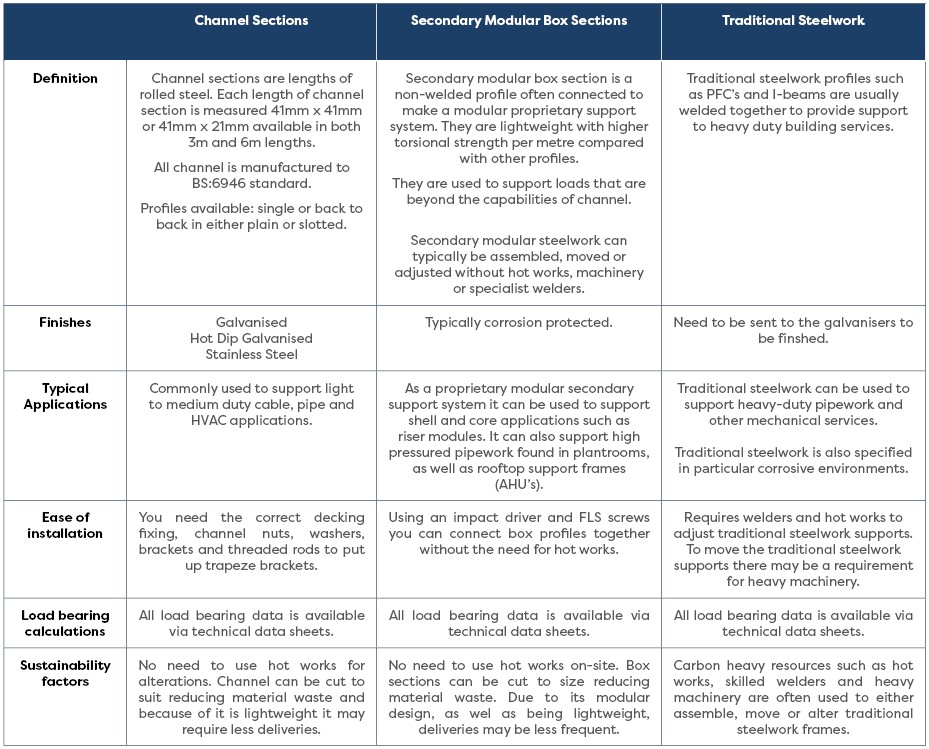
Are there any external factors to consider?
Load calculations
As greater regulation enters the sector, contractors will need to provide evidence that all assets supplied for an installation are fit for purpose. In some cases, channel section is wrongly specified and when it collapses there is no quantifiable evidence to show that it could safely support the intended load because the necessary calculations were not carried out.
The same applies, when using secondary modular box section as a proprietary system, the quantifiable load data and worst-case calculations must be shown, otherwise there is no evidence that the profile or bracketry is compliant.
Golden Thread
With the recent golden thread legislation, it has become a requirement for a duty holder to maintain a complete ‘thread’ of information. This 'thread' will hold data on all assets used that could influence the design and health and safety of a building. This documented trail should give the reader a detailed analysis of each M&E support including;
1.) The date the support arrived
2.) The load it is supporting.
3.) Evidence to prove the support has been designed to support that load.
The traceability (visibility of the 'golden thread' of information) should be carefully considered when sourcing a suitable profile or a complete M&E support system.
Sustainability
This is one of the core issues facing the M&E sector. Contractors bidding for large government contracts over £5 million must provide a carbon reduction plan to show the plans in place to achieve net zero 2050. As well as this it is now the responsibility of M&E project managers to report on carbon emissions throughout a project. Bearing all this in mind, the choice of profiles can greatly influence the amount of carbon used.
Internal viewpoints
The motives behind submitting channel sections or modular box section as a proprietary system when tendering for a project can differ. For instance, installers on-site will appreciate that channel supports and secondary modular box section can be installed easily and adjusted to suit. Buyers on the other hand will hold a different view, they are concerned with the cost of materials, therefore the struggle between both internal viewpoints can influence the profile selection.
Conclusion
Overall, it depends on the type of application and the service load the contractor is looking to support. All the different profiles should be considered carefully before submitting a tender for a project. As regulation and legislation surrounding building design and safety start to impact the entire supply chain, M&E contractors will need evidence to show that all supports can safely support the load placed upon them.



